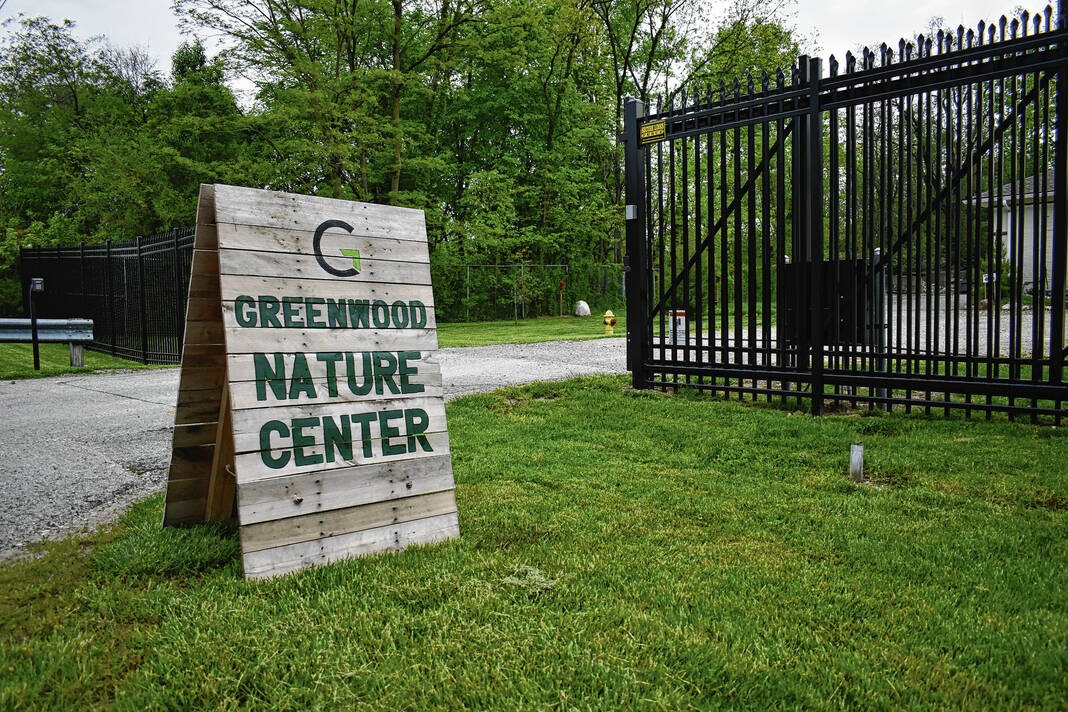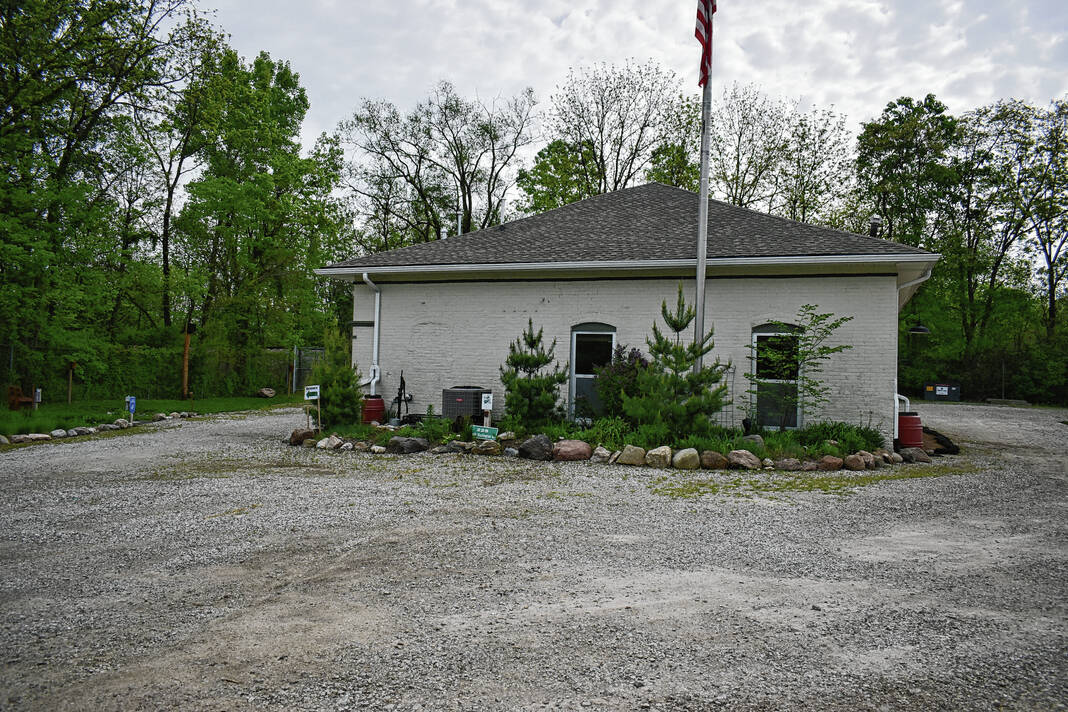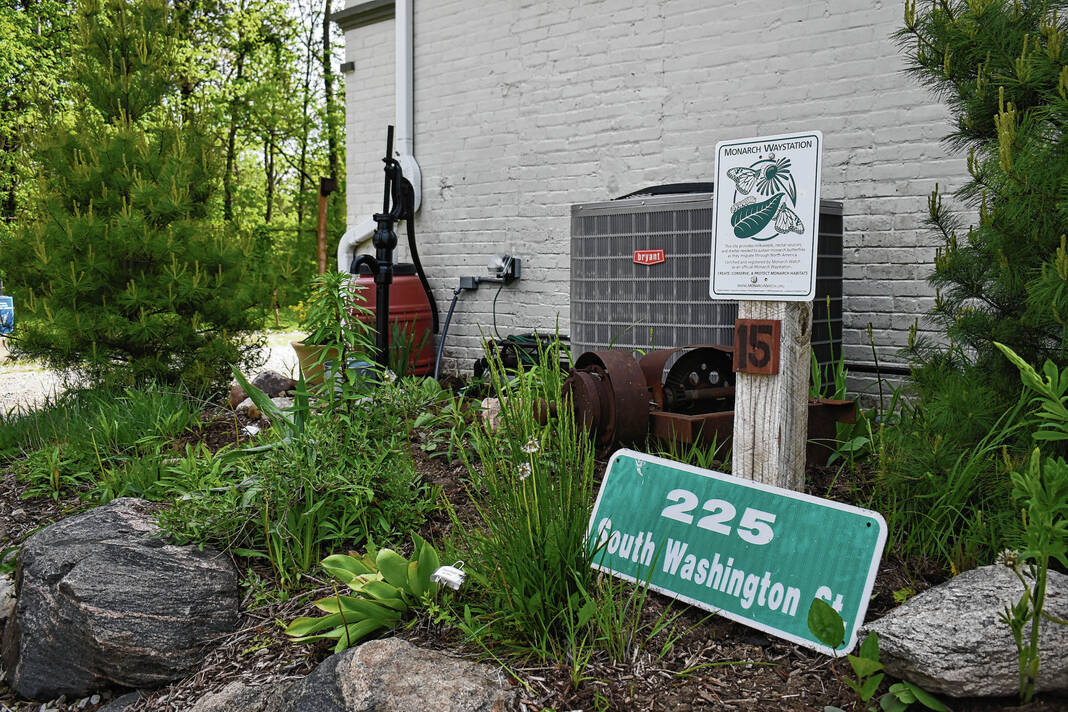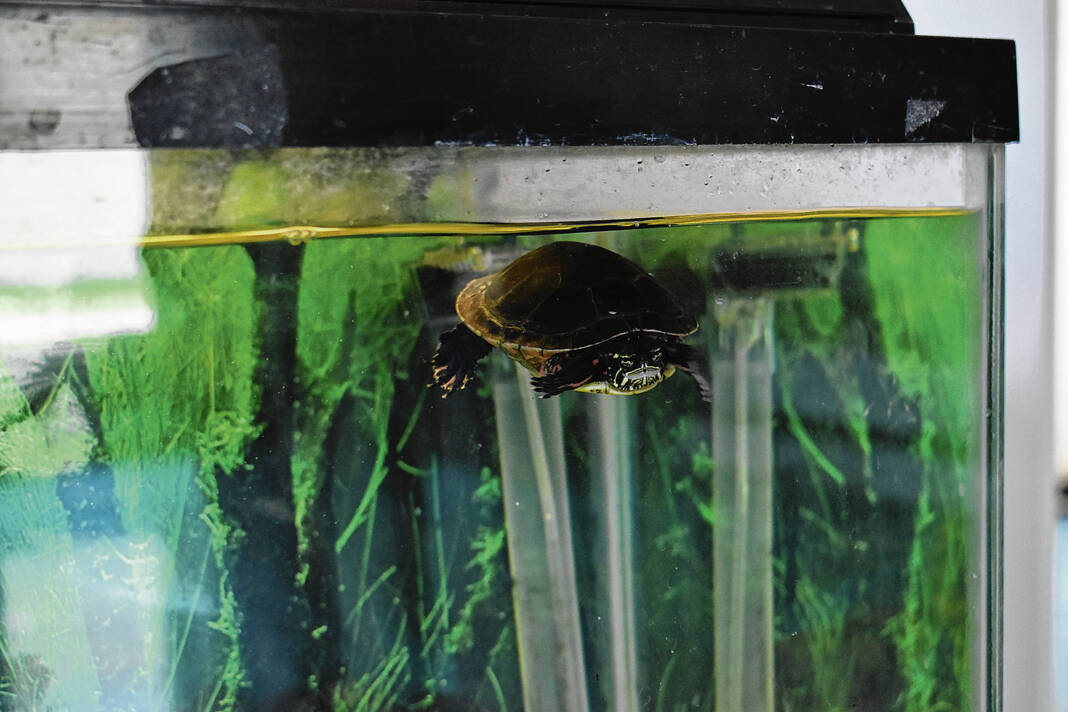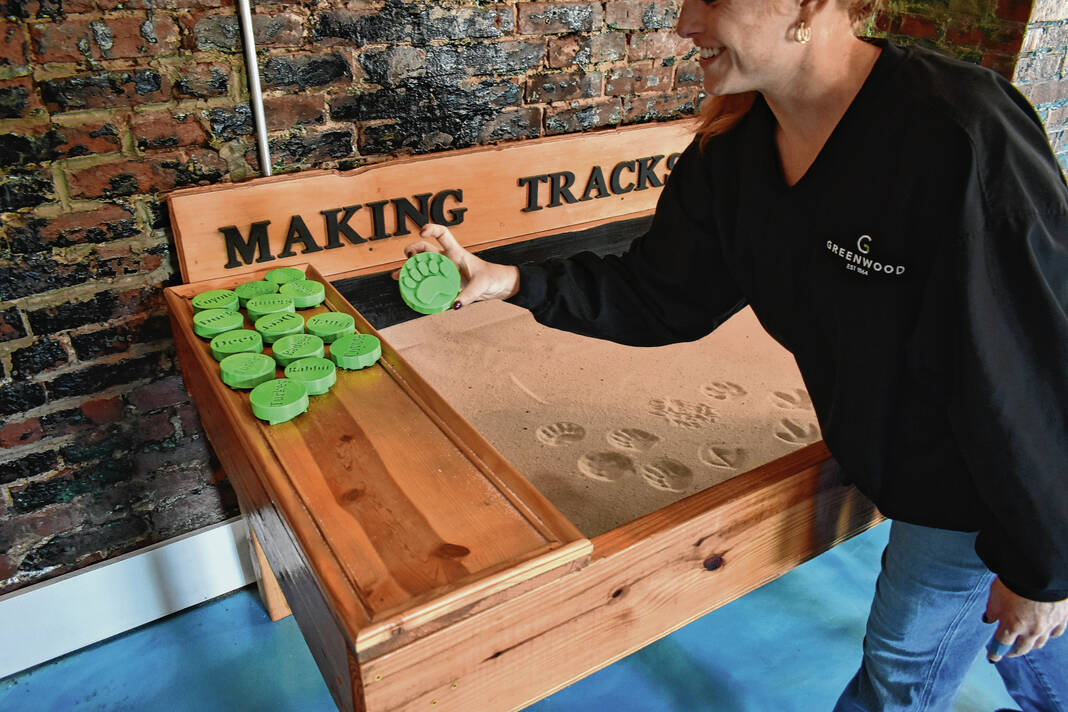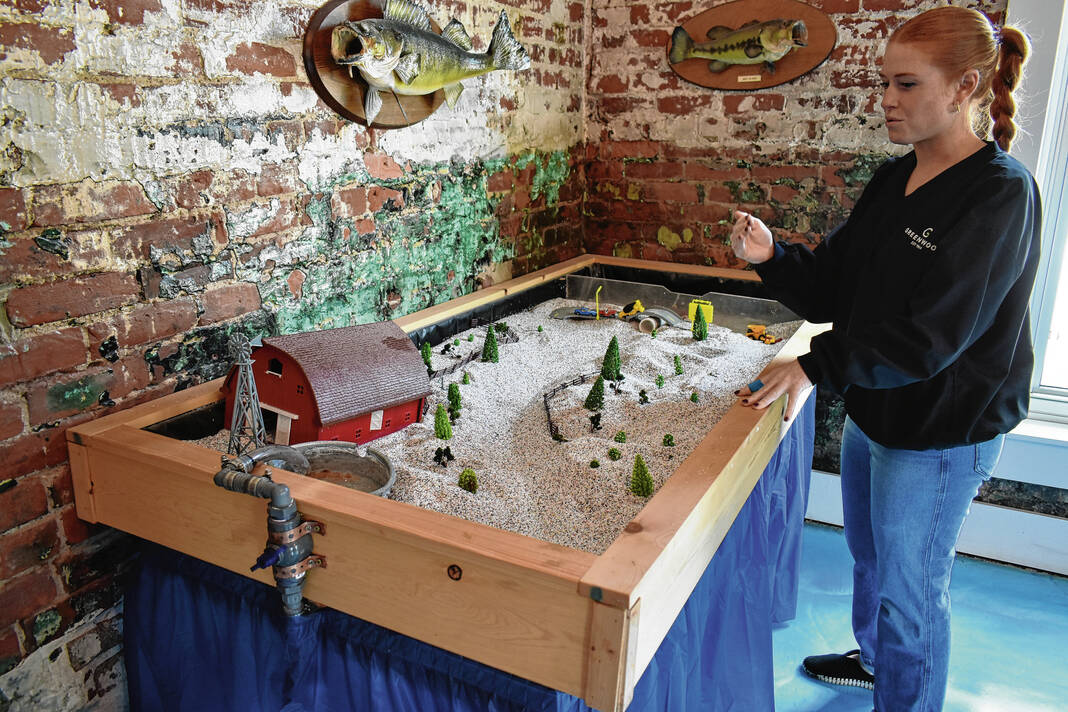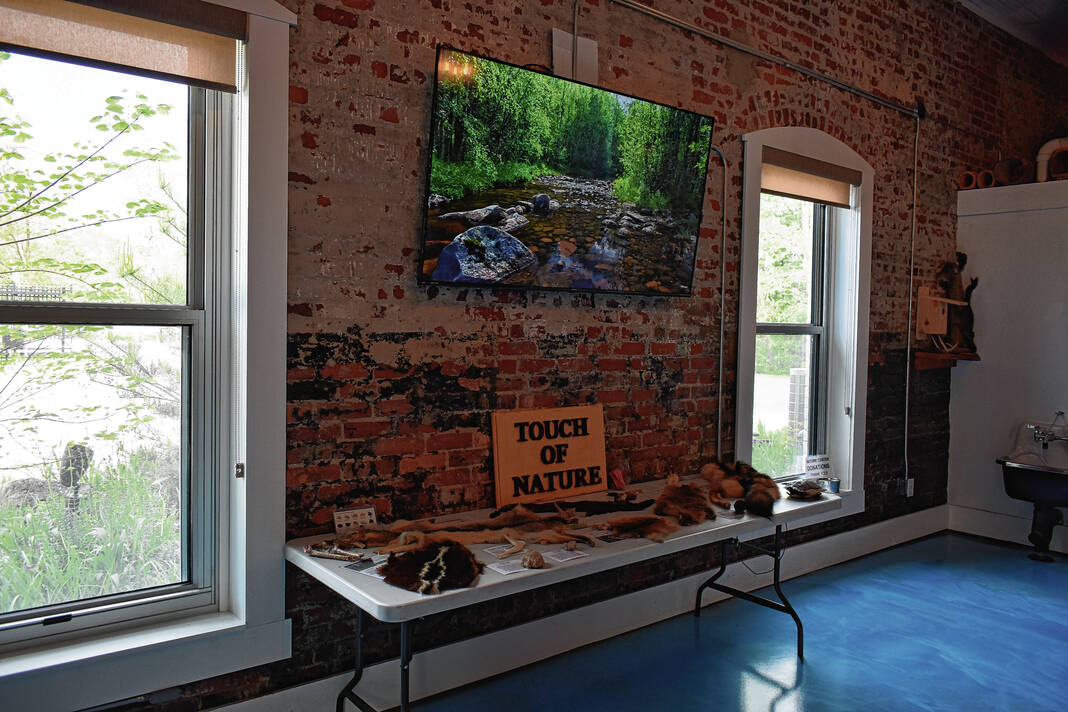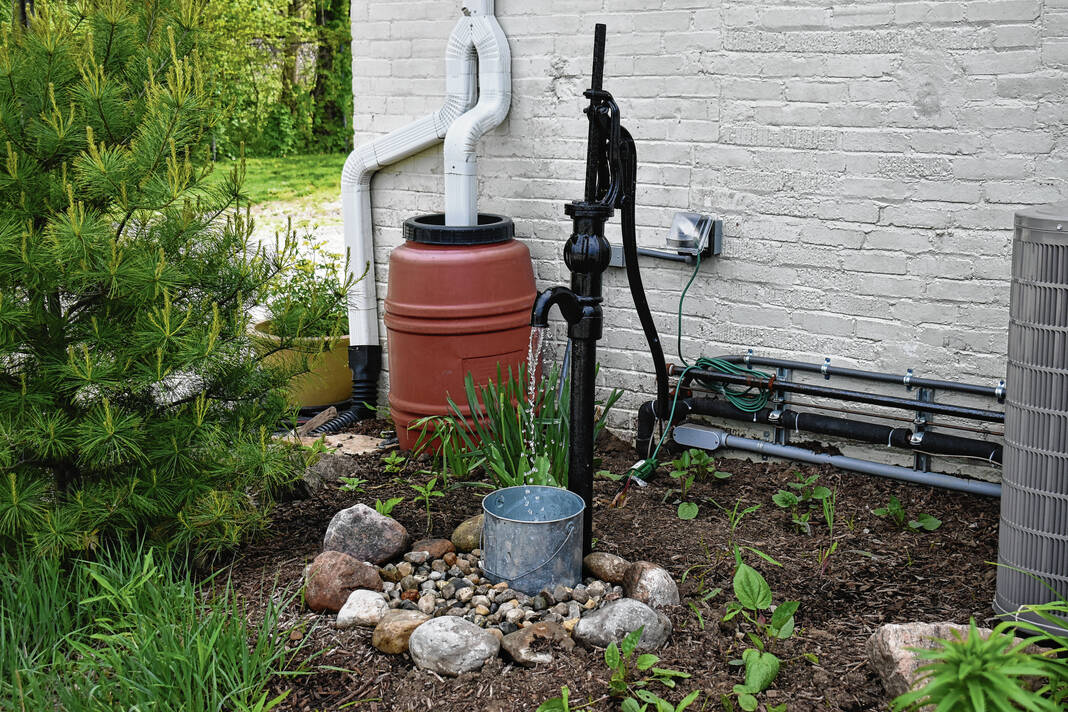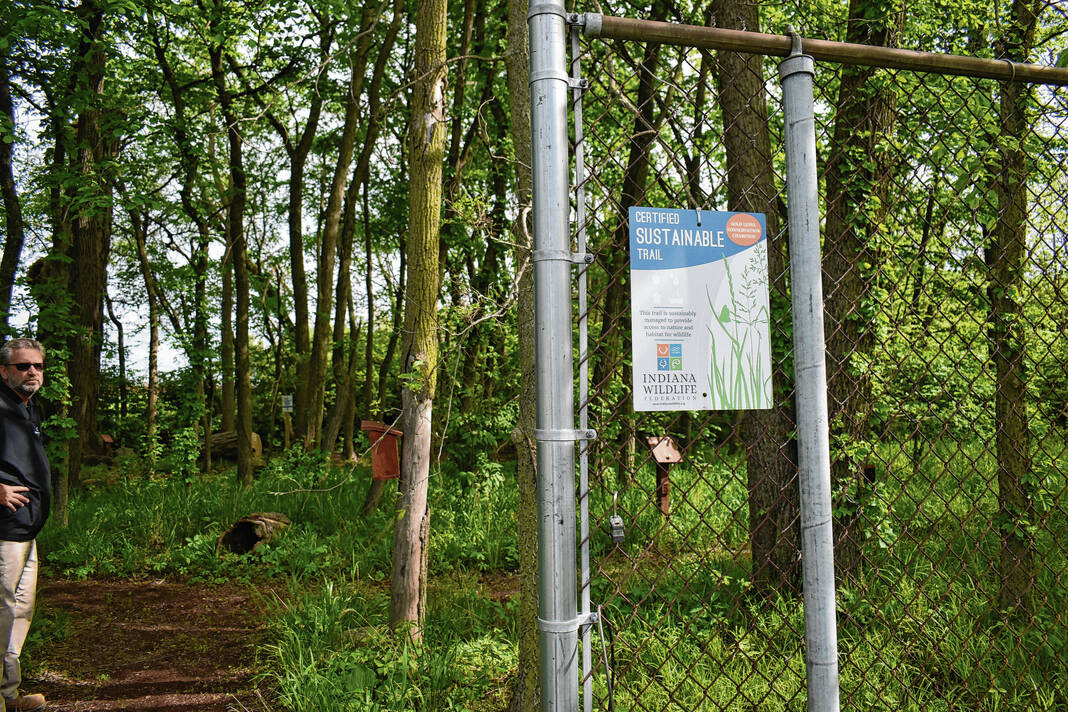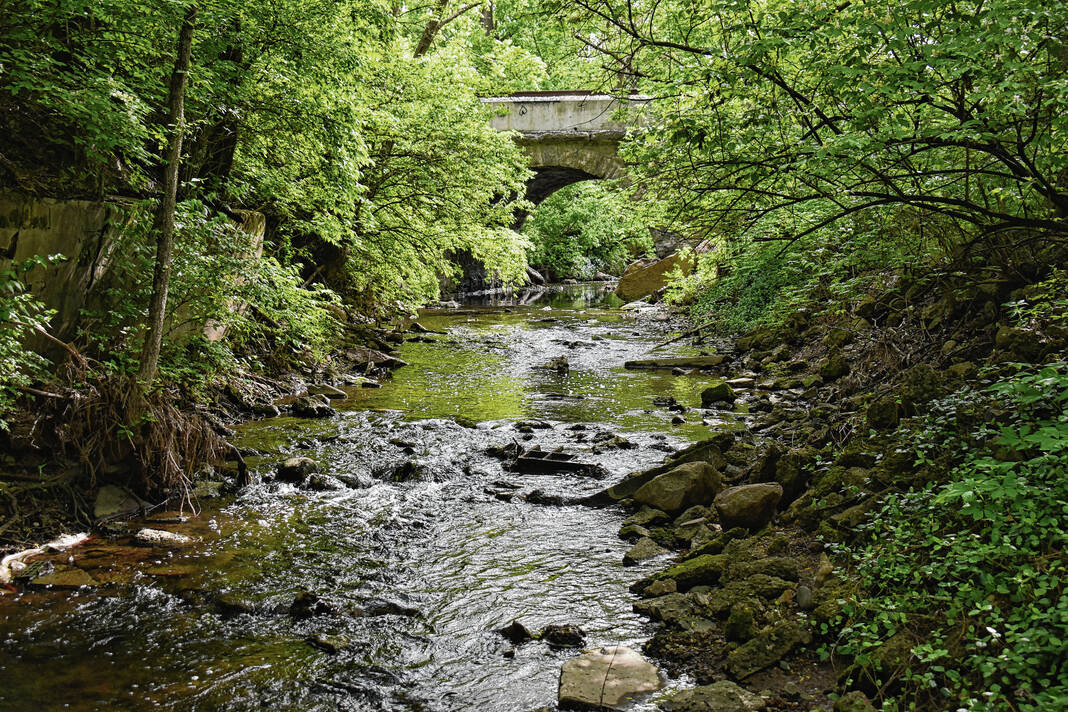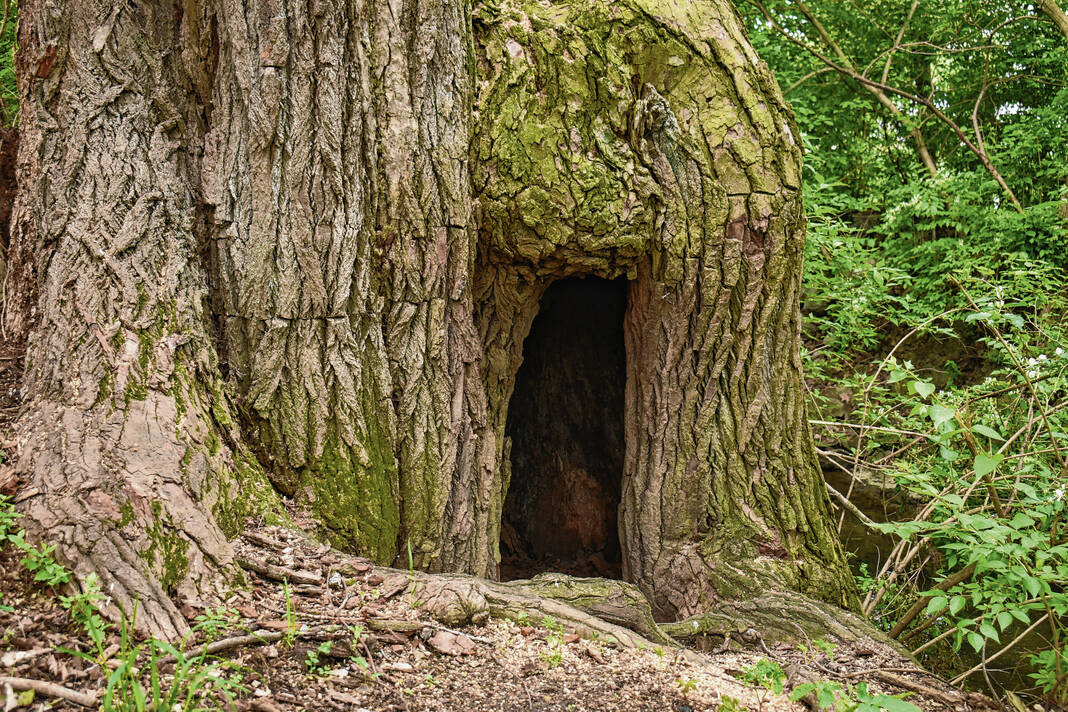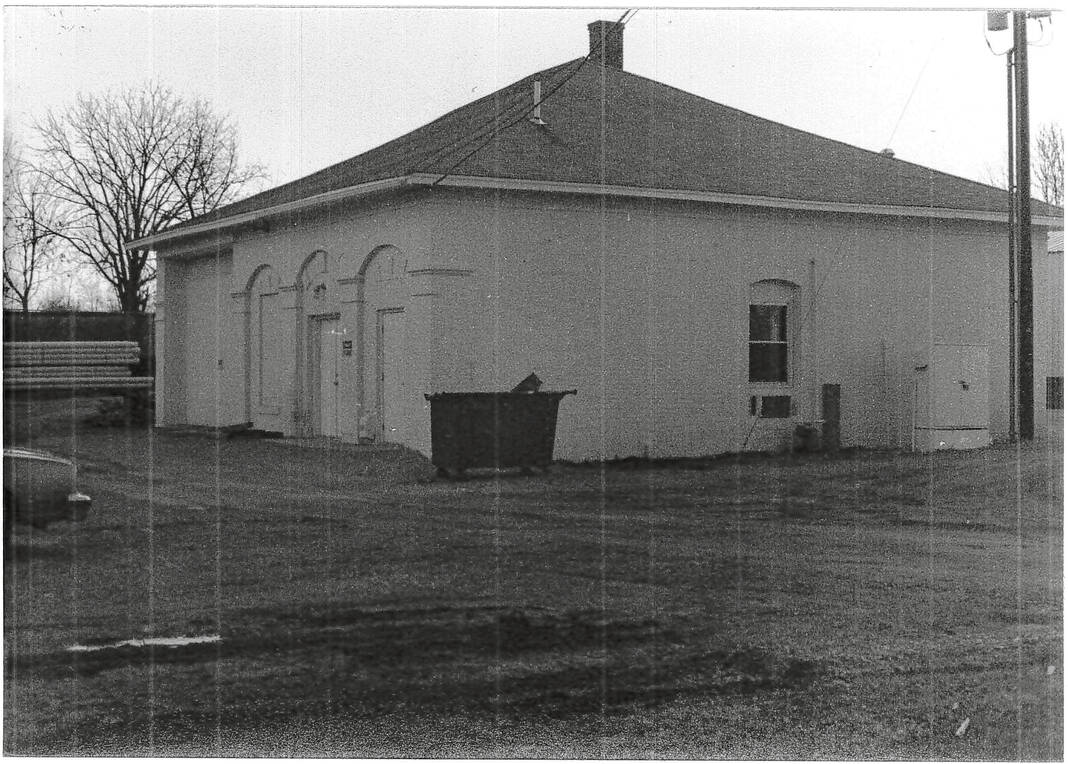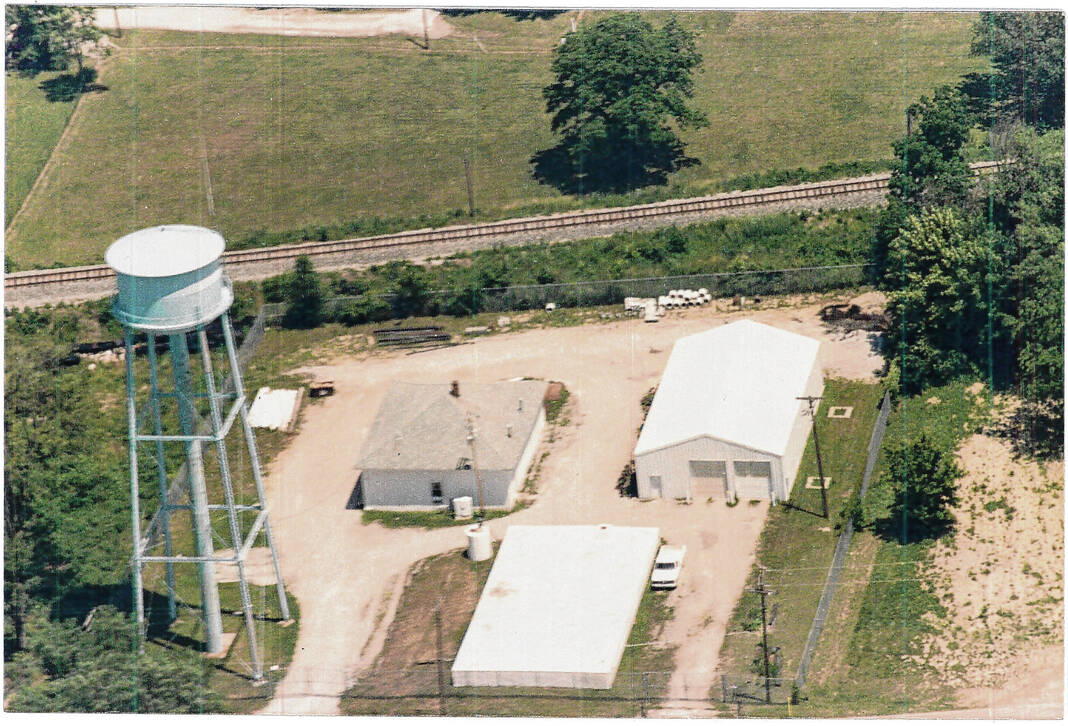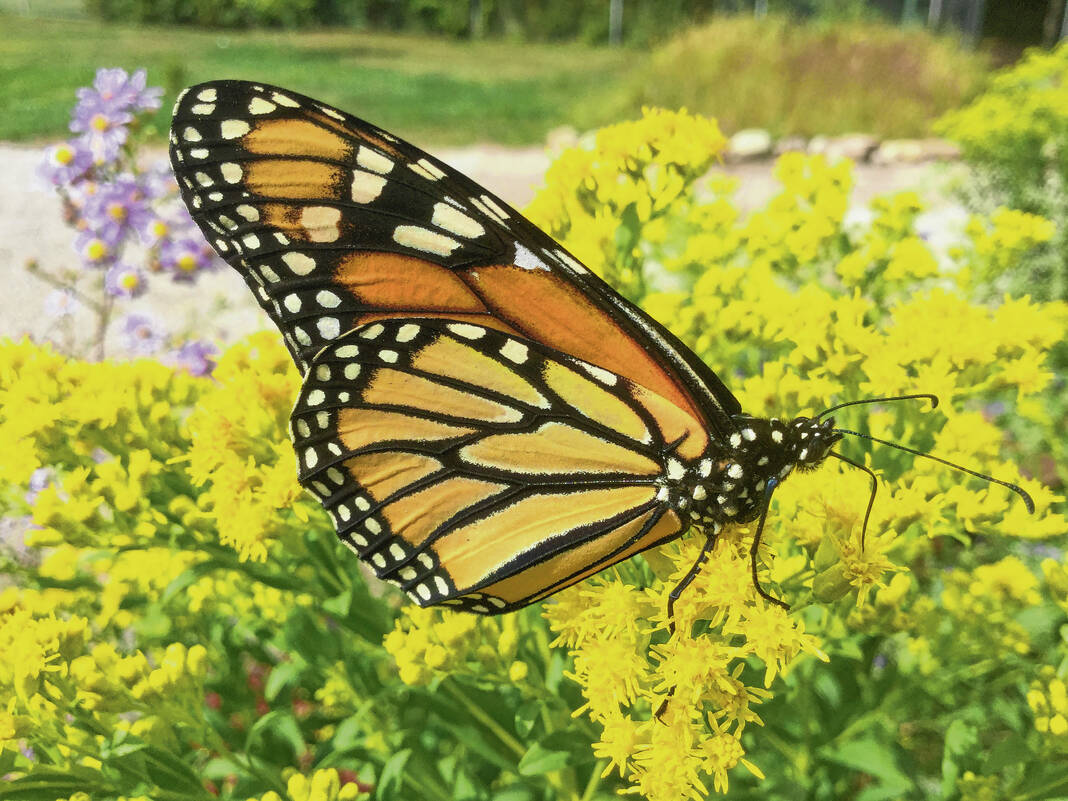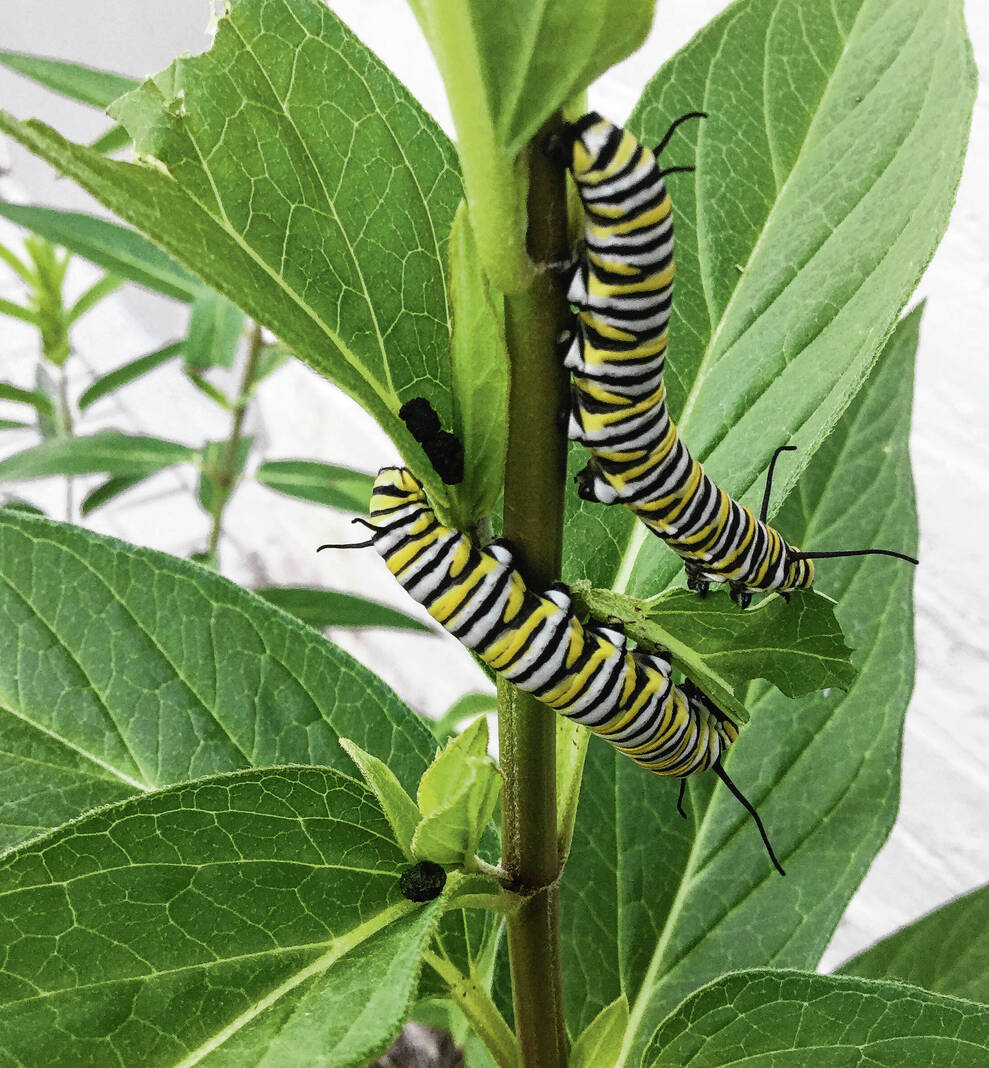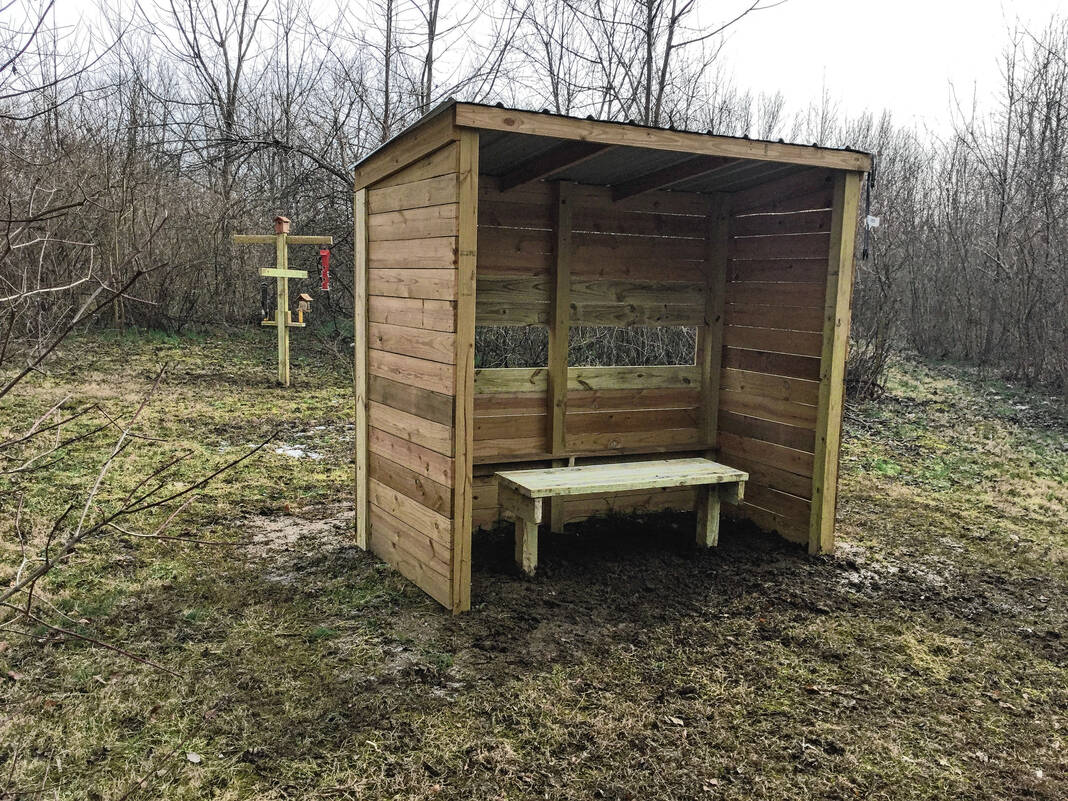Situated just off Main Street in Greenwood, the city’s nature center continues to provide residents a chance to learn more about the environment and water quality.
The Stormwater Nature Center and Testing Lab, set in a wooded area along Washington Street on the south side of Pleasant Creek, offers a wide variety of educational activities to teach people about water quality, how different types of pavements affect water runoff and how water quality testing benefits the environment.
Outside the main building are rain barrels, a rain garden and a prairie filled with native plants. There’s also a Monarch Waystation, where butterflies come to visit, snack and rest before continuing on their journeys across North America.
Along the nature trail, residents can see native plants and trees with signs explaining how each impacts the ecosystem. Visitors pass birdhouses for native birds and see various types of pervious pavements, which allow water to pass through to the ground. Steps also lead down to Pleasant Creek for easy access to the waterway.
The site that now houses the nature center was originally a water pumping station for the city. It was purchased by the stormwater department in the mid-2010s, said Chris Jones, stormwater superintendent.
Initially, officials thought about demolishing it. But then they started to think about how they could use the site to help accomplish some of their federal requirements for stormwater departments, Jones said.
Two of those mandates require stormwater departments to offer public education and outreach programs. Instead of bringing the programs to schools, for example, city officials decided to have a site where people could learn and take part in the programs, Jones said.
“We thought we would look at it from a different perspective and create the Nature Center, if you will, but focus it on water and water utilities,” he said.
After months of volunteer work and reusing old materials at the site, the center opened in 2017. For the first few years, children used to come in to use testing equipment to see creatures in the water under microscopes, Jones said.
But then the pandemic happened, and officials thought of new ways to use the space. They reinvested in the facility and remodeled it to make it more inviting, Jones said.
Among the changes is the nature center’s ceiling. Previous the ceiling was much lower, and officials decided to get rid of that and instead use the building’s original, and higher, ceiling, Jones said.
“It just opened up this space so much more and we can use it so much better,” he said.
Inside the center are activities that show visitors the effects of erosion, tree growth, leaf variety and native animals. There also are old clay drainage pipes, a byproduct of a different era, officials said.
Educational programming at the center revolves around a variety of actions that benefit the native environment, and explaining to people how they can make beneficial changes on their own. This includes programs about composting, focusing on native plants, and putting in rain gardens and rain barrels, which collects rainwater to be reused for other purposes, said Alison Bauer, an administrative assistant with the Stormwater Department.
Another program the nature center offers is Hoosier Riverwatch classes, which teach people about water quality and the importance of keeping waterways clean, Bauer said. This class is put on by the Indiana Department of Environmental Management.
Boy Scout and Girl Scout groups frequently visit the nature center for activities, The center also puts on a kids summer camp to introduce them to nature. This includes a miniature Hoosier Riverwatch class, Bauer said.
“So we’ll go into the creek and pick out all the bugs,” she said. “Based on what bugs they are, it tells you if the water is good, if the water is bad, or if it needs some help.”
There’s also a dumpster the department uses that shows children what debris they find in the city’s stormwater system.
“There’s always basketballs or bowling balls that are in that dumpster, but it’s just because we’ve pulled them out of the system,” Jones said. “That is very important, to show that those are the types of things that we do here.”
Recently, the city’s stormwater department asked IDEM about the possibility of removing Pleasant Creek from the state’s list of impaired water bodies, Jones said. E. coli was detected in the stream in the past, which is why it was placed on the list.
The stormwater department frequently tests for the bacteria, and based on the numbers they have, the results do not show the creek as being an impaired waterway anymore, Jones said.
Because of this, officials had a discussion with IDEM after an inspection last month, Jones said.
“They said that’s normally never done,” Jones said. “So they told us, ‘We have to figure out how to do that because no one’s ever applied (to have it removed.)’”
Most assume the water would continue to be impaired indefinitely, but because of activities done by the stormwater department to improve water quality in the last 10 years, the quality has improved, Jones said.
The stormwater department was also recently able to secure property that was located in a nearby floodplain west of the railroad tracks via a flood hazard mitigation grant from the Federal Emergency Management Agency, adding an additional nature trail. Because the land is in a floodway, nothing else can be built on it, Jones said.
Along with the trail, the land has a seating area and a birdwatch station. Officials are still determining what else could do there as the center does not do much with the land right now.
“We’re still trying to figure out what we can do differently, or how we can improve that, because obviously it’s not attached. We’re split apart with the railroad tracks,” Jones said.


